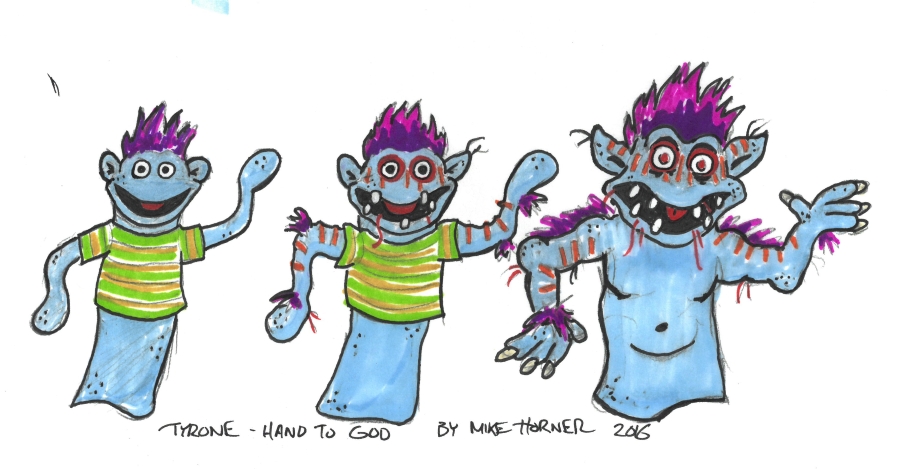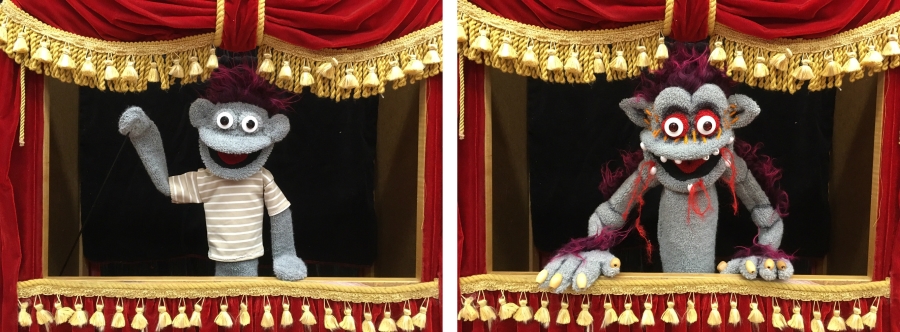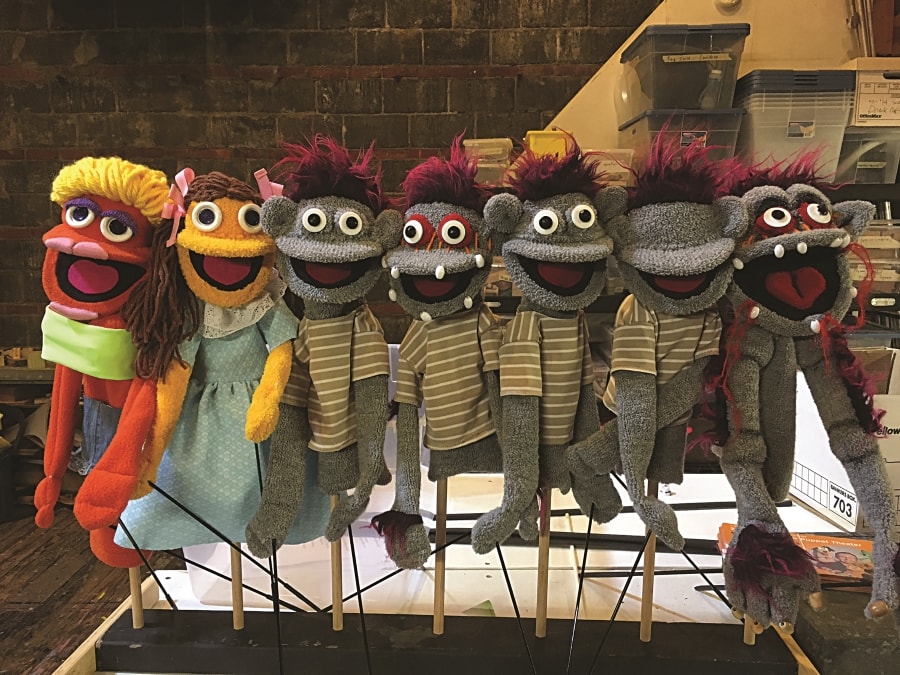In Robert Askins’s Hand to God (the new season’s most-produced play), Satan appears to possess the sock puppet of a troubled teenage boy, wreaking hilarious havoc on a Texas church’s puppet ministry. Askins took inspiration from his own experiences with his youthful church’s puppet ministry. So did Mike Horner, artistic director of Paul Mesner Puppets, when he was hired by Unicorn Theatre in Kansas City, Mo., to design puppets for their production of Hand to God, Sept. 7-Oct. 2. Below, Horner shares how he came up with the look for the demonic Tyrone.

I came to puppetry through puppet ministry. My parents started a puppet ministry in our church when I was young, and the first puppet my father bought was a big-eared, wide-mouthed, nose-less puppet named Stanley. As a nod to Stanley, I chose not to give Tyrone a nose. Stanley still resides in a tub in my closet.
The modern puppet ministry movement grew as a response to the popularity of “Sesame Street” in the early 1970s. Churches saw how puppets were being used to teach letters and numbers, and applied the concept to teaching the Bible—which is why most ministry puppets look like bad Muppet clones. With Tyrone, I wanted to riff on that idea, so we gave him a big mouth, wide circular eyes, and a friendly striped shirt, which pretty much describes every little boy Muppet in the early days of “Sesame Street.”

One of my favorite parts of the script is the idea that Tyrone not only repairs himself, but also gives himself teeth. In my design I expanded on that, and throughout the play the puppet continues to evolve visually. Tyrone gradually adds more bits and pieces to himself, like teeth, claws, and fur growing in odd places. We wanted all the embellishments to still look like they were pulled from the arts-and-crafts corner at the church, so we used beads, yarn, and buttons throughout.
A version of this story appears in the October 2016 issue of American Theatre.





